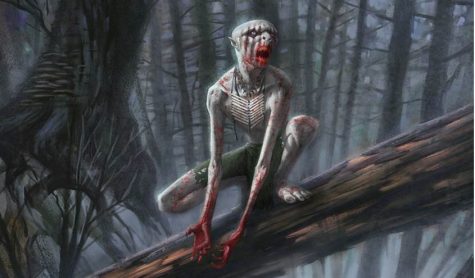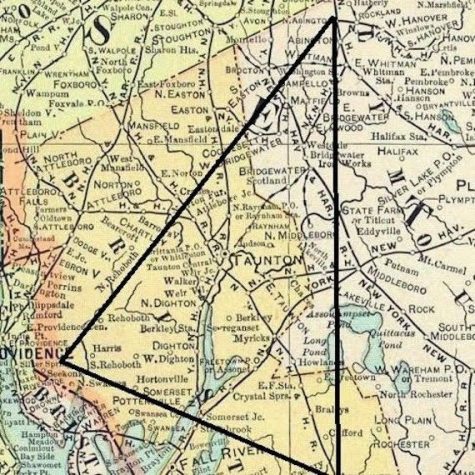Conspiracy Corner: Ness is More
Welcome back, fellow aquaphobiacs, to this week’s Conspiracy Corner. In this issue, we find ourselves journeying to the sloping hills and pristine lakes of Scotland to tackle a mystery going back nearly two thousand years. Grab your bagpipes, throw on your best water-proof kilt, and shout “FREEDOM” as we investigate the notorious Loch Ness Monster.
Loch Ness is one of a series of three lakes trailing through the Scottish countryside. Being fed by a number of sources, Loch Ness is a staggeringly large lake, twenty-four miles long, with a depth of 980 feet.
Along the loch rest two castles, Urquhart and Aldourie. With a beautiful landscape and quaint small towns, Loch Ness captures an almost picturesque look into the life of those living in the Scottish Highlands. Tourists flock to Loch Ness every year, pumping a whopping forty-one million pounds into the Scottish tourism economy. Yet, for many of those tourists, it is not the gleaming beauty of the emerald hills, the aged stone of the castles, or even the sparkling water of the lake that attracts them. No, it’s what lurks under the lake that has captured their attention.
According to some, a monster lurks in the water of the Loch – known by her nickname of “Nessie.” She has been described as a large, reptilian-like, marine animal with four flippers and a long neck that ends at a slender head. The most common comparison made between the sighting of “Nessie” and our examples of large water dwelling creatures is that of the plesiosaur. The plesiosaur is a dinosaur from the Mesozoic Era that dwelled in prehistoric oceans.
The sighting that popularized the creature occurred in 1933 in an issue of Inverness Courier, reporting that an unnamed couple witnessed a strange creature repeatedly rising above and diving below the surface of the loch. Shortly after, people claimed to have even seen the creature on land – traversing across roads and such.
In 1934, interest in the monster only grew after a photograph was supposedly taken of the monster. Known as “the Surgeon Photo.” it showed what is reportedly the head and neck of the creature poking out of the water. The photo was taken by one Robert Kenneth Wilson and published in the Daily Mail. In 1994, it was discovered that the photo was a hoax.
Yet, there were sightings before this. The earliest report of the Loch Ness monster was in 565 A.D. According to legend, St. Christopher was traveling through Scotland to convert the Picts when he stopped to hold a sermon along the shores of Loch Ness. Suddenly, a creature emerged from the water and attacked the crowd. Yet, as the story claims, St. Christopher made the sign of the cross and banished the monster back into the waters of the lake. Besides lending some credence to the story of Nessie, the tale has some eerie implications. It implies that Nessie may possibly have a supernatural or spiritual origin. Perhaps the reason we cannot find the Loch Ness monster is because it is a spirit and chooses when it physically manifests itself? Unlikely, yes, but we here at Conspiracy Corner never rule anything out.
Now, one may be asking that if a creature lived in a lake and has been spotted for centuries, how can it go so long without detection? The answer lies in the loch itself. Loch Ness is not only one of the largest lakes in the U.K., it is also one of the deepest, with a depth of over nine hundred feet. On top of that, sediment and other runoff from the water sources feeding the loch make the water extremely murky. It’s impossible to see more than a foot or so into the water.
Other theories have been presented, however. One such hypothesis contends that a series of underground tunnels stretching beneath the surface of the lake, connecting to other lakes or even the ocean. Though I have no opinion on the authenticity of this theory, I do believe such a thing is possible. Similar phenomena have been seen in the Blue Holes in the Bahamas, ironically home to its own legend of a lake monster.
The most compelling encounter of the supposed monster was the death of John Cobb in 1952. John Cobb was an English racing driver famous for breaking the land speed record in 1939 and again in 1947; when 1952 came around, he was determined to outdo himself once again. He commissioned the construction of a custom speedboat known as Crusader. During his first trial run, he reached over two hundred miles when a sudden bump from a wake in the water catapulted his boat out of the water. The Crusader fell apart around Cobb and left in him the lake. He was recovered but soon died of shock.
However, his death remains a mystery as no one is entirely sure what caused that wake along the loch’s surface. Two explanations have been given but neither is satisfactory. The first was that the wake was caused by Cobb’s initial run, leaving wakes and ripples that would disrupt his second run; this is impossible, though, as Cobb never ran his second run. The accident happened during the first trial round. The second theory is that the wake was caused by another boat on the lake – despite the fact that there were no other boats on the lake.
It may sound like a stretch but maybe, just maybe, something unusual was at play. Think about it. No chance of ripples from an initial run and no other boats on the lake, what else could cause unexpected wakes while avoiding detection from Cobb and his team? Perhaps something suddenly rising up from below the surface? If this is true, it does indicate that Nessie can take a hell of a beating and survive.
Regardless of what one thinks, the legend of the Loch Ness monster lives on to this day. And, considering how she is ranked alongside cryptids like Bigfoot or Mothman in terms of notoriety, it seems unlikely she will fade from memory any time soon. So, until one brave soul ventures into the depths of Loch Ness, we are left to sit on the idle shores, stare into the dark blues ripples of the surface, and ponder just what might be waiting below.







